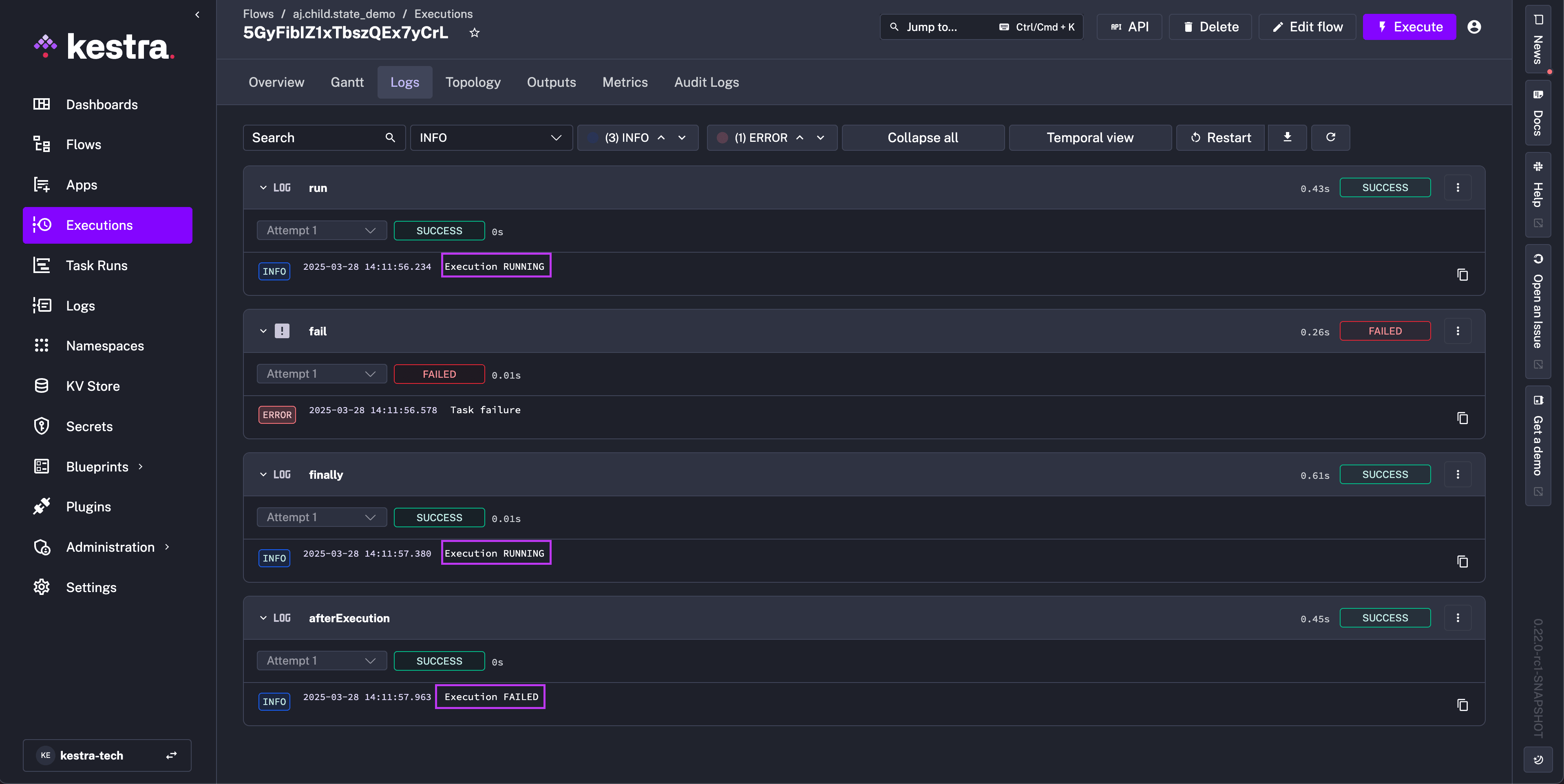afterExecution
Run tasks after a flow execution completes.
afterExecution tasks run once a flow has finished, allowing you to act on the final execution status.
afterExecution property
afterExecution is a block of tasks that run after the flow ends. You can use it to run conditional tasks based on the final state, such as SUCCESS or FAILED. This is especially useful for custom notifications and alerts. For example, you can combine afterExecution with the runIf property to send different Slack messages depending on the execution state.
id: alerts_demonamespace: company.team
tasks: - id: fail type: io.kestra.plugin.core.execution.Fail
afterExecution: - id: onSuccess runIf: "{{execution.state == 'SUCCESS'}}" type: io.kestra.plugin.notifications.slack.SlackIncomingWebhook url: https://hooks.slack.com/services/xxxxx messageText: "{{flow.namespace}}.{{flow.id}} finished successfully!"
- id: onFailure runIf: "{{execution.state == 'FAILED'}}" type: io.kestra.plugin.notifications.slack.SlackIncomingWebhook url: https://hooks.slack.com/services/xxxxx messageText: "Oh no, {{flow.namespace}}.{{flow.id}} failed!!!"afterExecution vs finally
afterExecution and finally are both end-of-flow constructs, but they serve different purposes.
The afterExecution property differs from the finally property because:
finallyruns tasks at the end of the flow while the execution is still in aRUNNINGstate.afterExecutionruns tasks after the execution finishes in a terminal state like SUCCESS or FAILED.
Use finally for cleanup operations that should always run, regardless of the outcome. See the finally documentation for examples. When follow-up actions depend on the final state, use afterExecution to capture the result.
To demonstrate, take the following flow that uses both finally and afterExecution:
id: state_demonamespace: company.team
tasks: - id: run type: io.kestra.plugin.core.log.Log message: Execution {{ execution.state }} # Will show RUNNING
- id: fail type: io.kestra.plugin.core.execution.Fail
finally: - id: finally type: io.kestra.plugin.core.log.Log message: Execution {{ execution.state }} # Will show RUNNING
afterExecution: - id: afterExecution type: io.kestra.plugin.core.log.Log message: Execution {{ execution.state }} # Will show FAILEDAfter executing the above, you can see that the finally task has a status of RUNNING while the afterExecution task says FAILED.

Best practice: Use afterExecution when you need to act on the final state of an execution. Use finally when you need to ensure cleanup happens regardless of state.